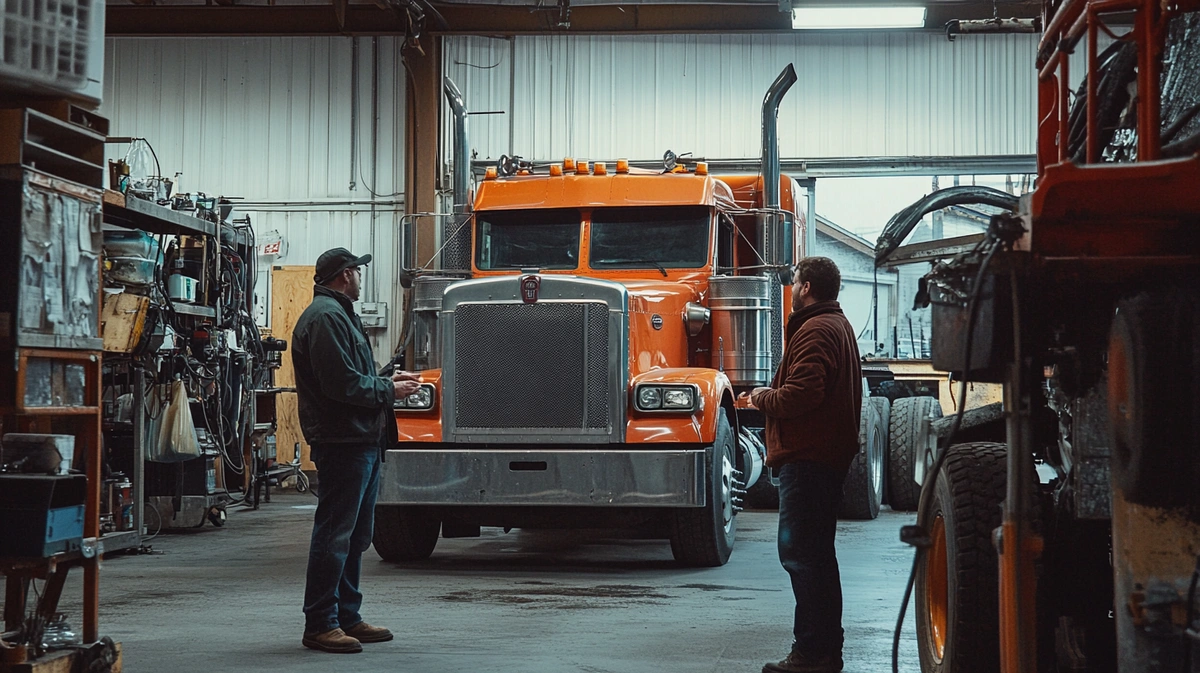Need help? We're here!
(888) 312-8812 Login SignupAnatomy and Parts of a Semi-Truck Explained
September 16, 2024

September 16, 2024

Semi-trucks, also known as 18-wheelers or big rigs, are complex machines made up of numerous parts working together to transport goods efficiently. Understanding the anatomy of a semi-truck is essential for truck drivers, mechanics, and anyone involved in the trucking industry. This blog will take you through the key components from front to back, helping you get familiar with their names and functions.
Cab
Driver's Seat: Where the driver operates the truck.
Dashboard: Contains all the controls and displays.
Sleeper Berth: Rest area for drivers on long hauls.
Engine Compartment
Hood
The framework of the truck that supports the cab and trailer.
Fuel Tanks: Store diesel fuel for the engine.
Exhaust System: Channels exhaust gases away from the engine.
Axles and Suspension
Front Axle: Supports the weight of the cab and helps steer the truck.
Rear Axles: Support the weight of the trailer and cargo.
Suspension System: Ensures a smooth ride and stability.
A coupling device that connects the truck to the trailer.
Trailer
Landing Gear: Supports the trailer when it is not connected to the truck.
Trailer Axles: Support the trailer's weight and help in movement.
Trailer Brakes: Ensure the trailer stops safely.
Trailer Suspension: Maintains stability and absorbs shocks.
Each part of a semi truck plays a crucial role in its overall functionality and safety. The cab houses the driver and controls, the engine compartment provides the necessary power, and the chassis supports the structure. The axles and suspension ensure smooth and safe travel, while the trailer carries the cargo. Understanding these parts helps in maintenance, troubleshooting, and efficient operation.
Different semi-truck models have unique features and parts that distinguish them. Here are a few popular models:
Freightliner Cascadia
Known for its fuel efficiency and advanced aerodynamics.
Kenworth T680
Features a comfortable cab and reliable performance.
Volvo VNL
Offers advanced safety features and a quiet ride.
Peterbilt 579
Combines classic design with modern technology.
Mack Anthem
Built for durability and long-haul comfort.
To get a visual understanding, refer to diagrams that highlight the different parts of a semi truck. These diagrams are helpful for identifying components and understanding their placement and connections.
Knowing the anatomy and parts of a semi-truck is essential for anyone involved in the trucking industry. From the cab to the trailer, each part plays a vital role in the truck's operation and safety. By understanding these components, you can better maintain, operate, and troubleshoot your semi-truck, ensuring efficient and safe transportation of goods.